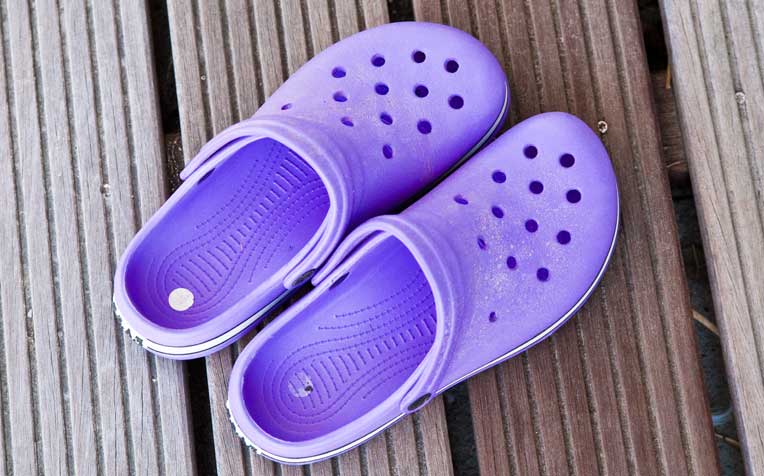HealthXchange will NEVER ask you to transfer money over a call. If in doubt, call the 24/7 ScamShield helpline at 1799, or visit the ScamShield website at www.scamshield.gov.sg.
Footwear Advice: Shoes to Watch Out For

Over-roomy shoes are not intended for extensive walking.
Shoes that spell danger
Flip-flops (sandals)
Most Singaporeans own several pairs of flip-flops. Podiatrists will tell you that flip-flops are too flat, too thin and too open and can lead to many foot problems. They should thus be avoided in case of prolonged walking because they offer very little to no arch support, heel cushioning or shock absorption. This type of shoe can accelerate the problems associated with having a flat foot.
Furthermore, the thong that sits between your toes can also be dangerous as it forces your toe muscles to over-grip, which may lead to an overuse injury. These injuries may lead to toe deformities such as hammer toes or claw toes. Podiatrists see these issues on a regular basis.
High heels
Wearing heels shifts your weight to your forefoot, which increases the pressure to this area and typically leads to forefoot pain. High heels also create a balance problem; as you force your knees and hips forward, it may lead to pain and discomfort in your back and legs.
It is estimated that every inch (or 2.5cm) of heel raise results in a 25 per cent increase in body weight transfer to your forefoot, with the associated risk of forefoot pain.
Wearing high heels also increases the risk of developing nerve impingements, bunions and hammer toes. Such problems can often be permanent and may require surgical correction.
Over-roomy shoes (clogs or Crocs)
This type of shoes has become very popular recently; however it was never intended to be used for extensive walking. The shoe was originally developed as spa footwear.
Since the extra roomy toe box has no adjustable strap, the feet move around a lot, which causes them to be unstable and may lead to foot and lower limb pain.
Ballet flats
Shoes that are too flat don't provide adequate arch support, which is especially an issue for those with flat feet. Furthermore, as the soles are often very thin, they provide insufficient shock absorption. The force from the ground is directly transferred onto the soles of your feet, which can lead to discomfort in prolonged walking.
There's also a higher risk of the sole being pierced by a foreign object.
Page 1 - 5 characteristics of good shoes.
Ref: R14
Related Articles
Public Events
Get the Health Buddy App
© 2025 SingHealth Group. All Rights Reserved.


















 Get it on Google Play
Get it on Google Play